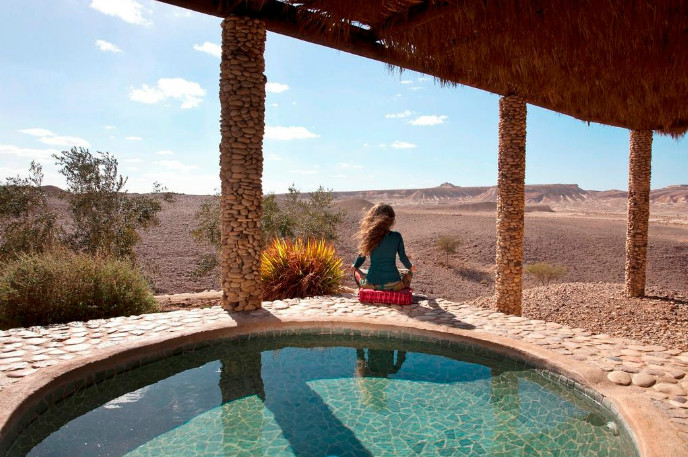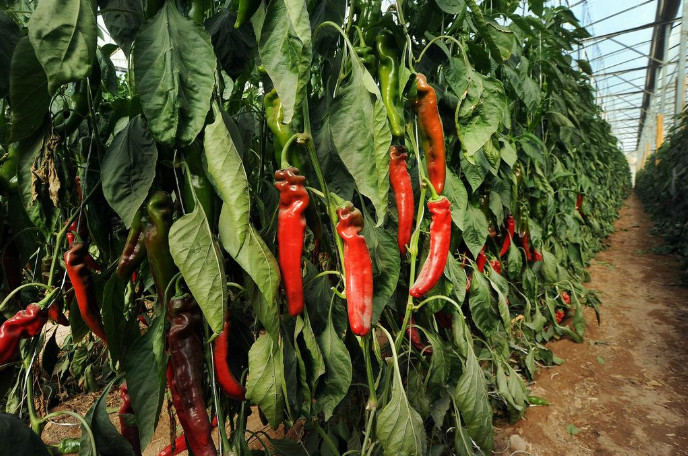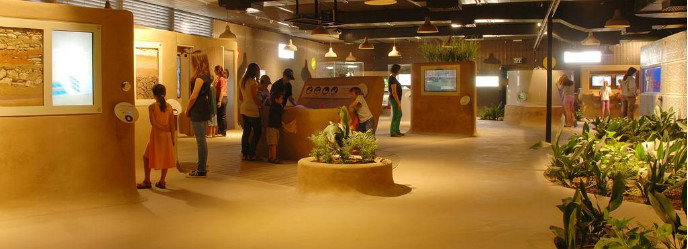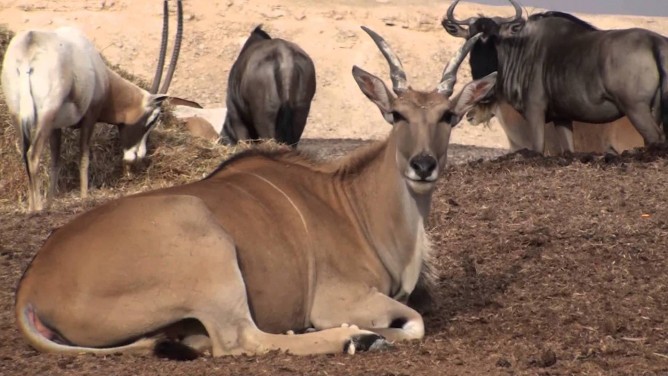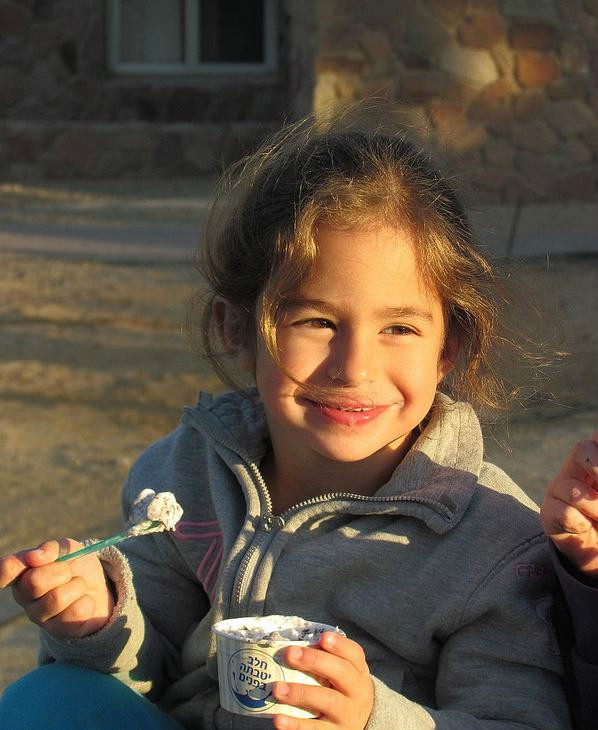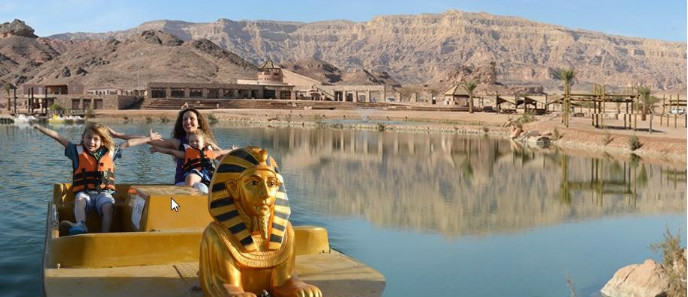In Israel, “desert” doesn’t mean “desolate.” The sandy Negev expanse that makes up more than half of Israel’s land mass encompasses fascinating vistas, history and creativity.
Here we will zero in on the attractions of the eastern part of the desert: the narrow Arava Valley, stretching 180 kilometers (112 miles) from the Dead Sea down to Eilat, bordered on the west by the Negev highlands and on the east by the Edom Mountains of Jordan.
For tourists, there’s never been more to experience in the Arava: ancient archeology, timeless Bedouin hospitality, funky eco-art, hiking, biking, horseback riding, bountiful farms, birdwatching and lots of activities for children, including ice-cream workshops.
Believe it or not, farmers in the Arava’s three distinct regions – northernmost Tamar (Sodom Valley), Central Arava and southernmost Eilot – produce more than half of Israel’s agricultural exports.
Tourists can now learn the secrets of making the desert bloom, at the Vidor Visitors Center located under a spinning windmill at the entrance to the Arava R&D Center’s Yair Station off Highway 90 in the Central Arava.
The Vidor Center offers a multi sensory look at how the region’s advanced agro-tech has overcome water and soil challenges, growing a large variety of edibles and ornamentals on irrigated salty water. Watch a 3D film, visit the experimental greenhouses and make rain in the interactive farming museum. The center is wheelchair accessible and English-friendly.
At Vidor, sign up for guided adventures such as visiting family farms, tracking desert animals, riding horses and camels, and seeing the Arava from the seat of a jeep.
On your own, ride along the Arava Peace Road that runs next to Israel’s border with Jordan.
With Jordanian villages visible just a few feet away, the Peace Road takes travelers through the Central Arava farms of Idan, Hatzeva and Ein Yahav, with several observation points overlooking the Arava stream bed, date palm and acacia groves and the mountains of Edom. The road is dotted with picnic areas.
The agricultural moshav (collective village) of Ein Yahav also contains the Aloe Vera House visitor’s center and factory store selling Just Aloe products produced on the moshav; and the Porat Apiary where you can sample honey the local bees have made from wildflowers and fruits.
In Sapir, a newly developed Central Arava community on the other side of Highway 90 from Ein Yahav, experienced hikers will enjoy the Vanishing Valley trail encompassing an idyllic lake and sculpture garden. (Side note for tourists: The new JNF Medical Center at Sapir is the only facility in the area with an emergency clinic.)
Antelopes, birds and crocodiles
Between Sapir and Zofar a little farther south, the Antelope Ranch houses hundreds of antelopes, kudus and impalas roaming free. Kids can explore a replica of Noah’s Ark with lots of real animals inside.
If you plan your Arava visit in the spring or autumn, you’ll observe huge flocks of birds making their way in formation to and from Africa. The region’s reservoirs and date orchards are favorites with many species.
Crocoloco at the Ein Hatzeva Junction in the Central Arava is a unique desert farm where 2,000 crocodiles thrive in the warm climate and the brackish geothermal water.
Shahar Hermelin, director of tourism for the Jewish National Fund, recommends a stop at Zuqim (Tzukim), an Arava village built in 2001 as part of the JNF’s Blueprint Negev plan aimed at increasing the local population through infrastructure and tourism projects.
Although Zuqim is not an official artists’ colony like Ein Hod in the Carmel Mountains, it is full of artists specializing in media including stone, metal, clay and soap. Groups can arrange treasure hunts and other activities.
“Zuqim also has beautiful B&Bs, a café and a restaurant, so it’s coming along nicely as a tourism hub,” Hermelin tells ISRAEL21c.
Even if your main destination is Eilat, Hermelin urges you to drive down, rather than fly from Tel Aviv, so as not to miss the awesome scenery and activities in the Arava.
Staying overnight is not a problem; there are hundreds of bed-and-breakfast options in the Arava range from wooden chalets to eco-huts and Bedouin-style tents, according to the Central Arava Regional Council’s Tourism Department. There are hostels, campgrounds and romantic cabins, too.
Dining options are plentiful. In addition to traditional Bedouin cuisine, Arava eateries offer Israeli, Mediterranean,Asian, Italian and South American cuisine.
Hiking through history
An ever-increasing number of biking, hiking and off-road trails take explorers through the Arava’s canyons and dry river beds (wadis),showcasing a combination of nature and history.
You’ll see remains of way stations for the camel trains traversing the ancient Nabatean Spice Route from Arabia to Gaza. Climb the Ein Hatzeva Fortress, a biblical stronghold with a nearby Edomite temple, Roman fortress and 1,000-year-old jujube tree. Wander in the wilderness of Zinn, which the ancient Israelite tribes traversed during their 40 years in the desert.
Farther south in the Eilot Regional Council, several unusual kibbutzim offer visitors a range of activities and overnight accommodations.
At Kibbutz Yahel, the JNF recently opened a park and shopping center replete with fish ponds and playgrounds – and public restrooms, a welcome sight in the desert.
Yahel, approximately 65 kilometers north of Eilat, boasts a large date plantation and reservoir, pomelo orchard and dairy farm. There are walking paths, a lookout tower,farmers market, restaurant/coffee bar and a motion-based adventure ride simulating desert flash floods.
Ecotourists should check out Kibbutz Neot Semadar, Kibbutz Lotan and Kibbutz Ketura.
These and other Arava collective villages teach visitors about mud-brick building, recycled art and architecture, solar energy, wine-making, and medicinal herbs and algae.
The desert does get rather hot, but never fear –ice cream and chocolate milk tours await you at Kibbutz Yotvata, 30 minutes north of Eilat.
Yotvata, the oldest kibbutz in the Arava, has an inn offering travelers full road services, kosher meat and dairy restaurants, a convenience store and a tourist shop. You can take agricultural and dairy tours in 11 different languages; coordinate in advance (972-54-979-8491).
“On our famous Yotvata Dairy tour you get to taste our chocolate milk,” says tourism coordinator Taal Goldman. Yotvata’s Shoko is Israel’s leading chocolate milk brand.
“We also offer ice cream-making workshops, and we serve 72 different flavors – not all at the same time — mostly made from Yotvata milk from the kibbutz dairy farm and factory,” she tells ISRAEL21c.
In the fall of 2015, the new interactive Yotvata Park complex is expected to open, offering a range of activities, tours and attractions providing a hands-on experience of kibbutz life and history.
Farther toward Eilat you’ll reach Hai-Bar Yotvata Nature Reserve and Timna Park, which the JNF’s Hermelin calls “one of the crown jewels of the area.”
The old copper mines and famous rock formations at Timna date from the time of King Solomon. Modern attractions include a new auditorium where you can watch “Copper Kingdom” about the ancient industry. There’s also a boating lake, bike paths, zip-line and rappelling, and an almost-finished visitors center. See the website for further details.
The Arava tourism website does not yet have an English version, but a brand-new 36-page English brochure detailing all of the Arava’s attractions, eateries, services and accommodations can be emailed by request from tourism@arava.co.il.
Fighting for Israel's truth
We cover what makes life in Israel so special — it's people. A non-profit organization, ISRAEL21c's team of journalists are committed to telling stories that humanize Israelis and show their positive impact on our world. You can bring these stories to life by making a donation of $6/month.





